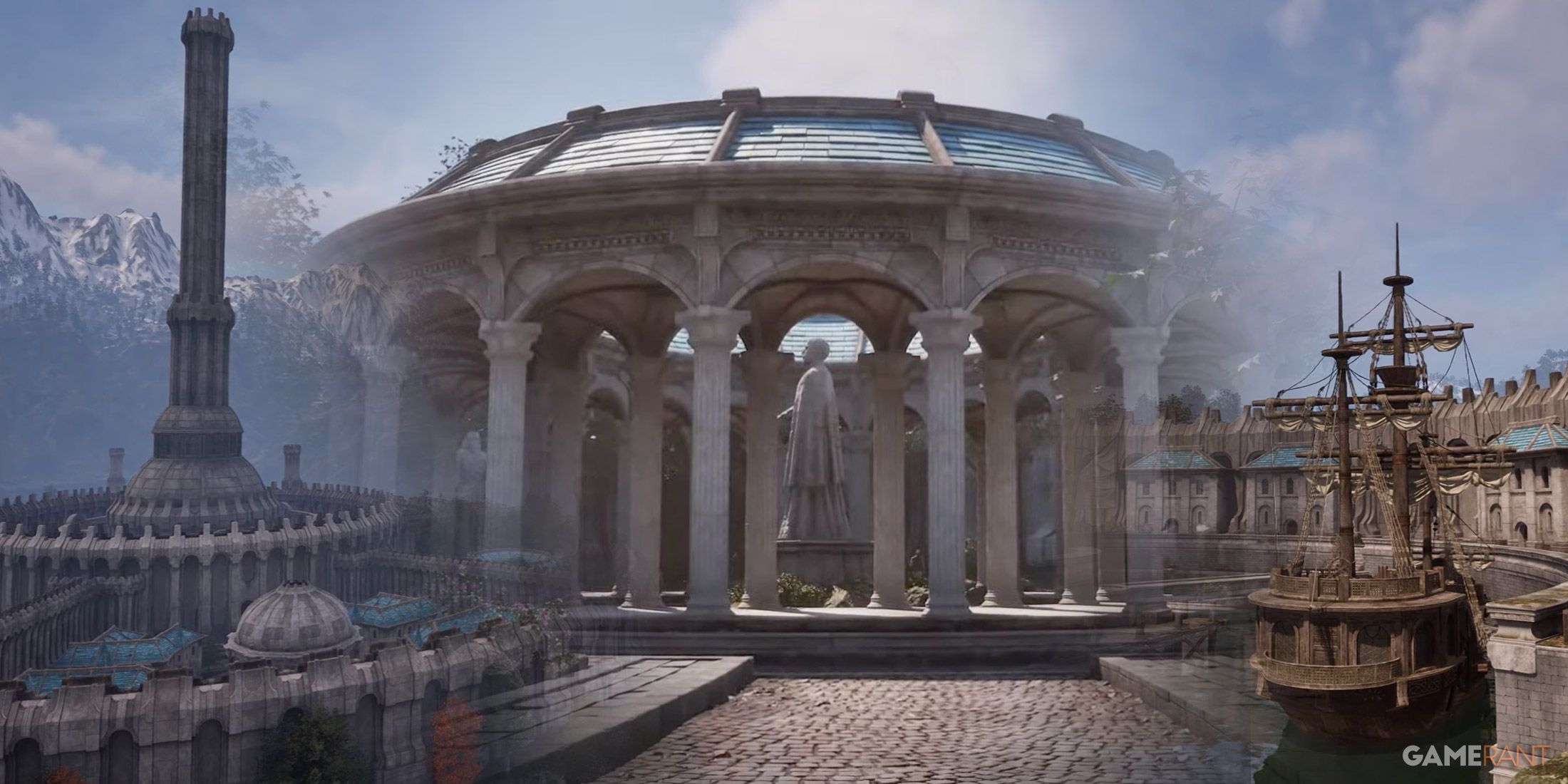
Summary
- The Imperial City has a rich history starting with the Ayleids in the Merethic Era.
- Reman Cyrodiil restored the city’s prominence, creating the Blades after the Akaviri invasion.
- The Fourth Era saw the Empire decline, with the Thalmor sacking the city before its recapture and the signing of the White-Gold Concordat.
Players of Oblivion Remastered are sure to have invested numerous hours within the revamped portrayal of the Imperial City. Being pivotal in Tamriel’s history, the Imperial City has been inhabited by a variety of races and factions across different periods and can be found in some form in three Elder Scrolls games.
In the principal storyline of Oblivion Remastered, an invasion by Daedra, led by Mehrunes Dagon, brought devastation upon the Imperial City, threatening to destroy all of Nirn. However, this was not the first time Cyrodiil’s capital has been embroiled in strife and turmoil. Throughout history, it has been a focal point for battles among great warriors and petty monarchs, symbolizing human rule for thousands of years.
Spoilers ahead for Oblivion Remastered.
The Imperial City’s Origins With the Ayleids
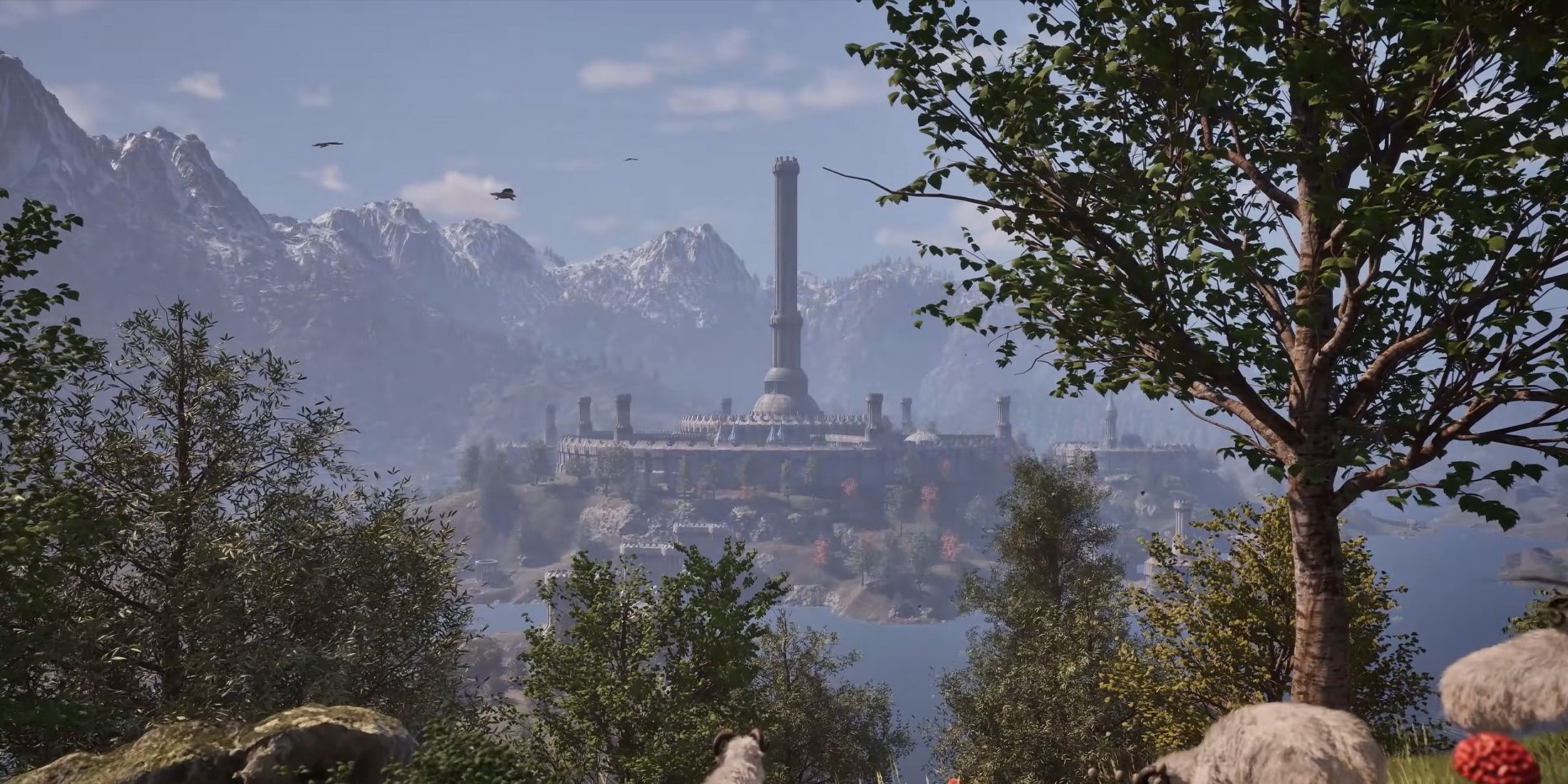
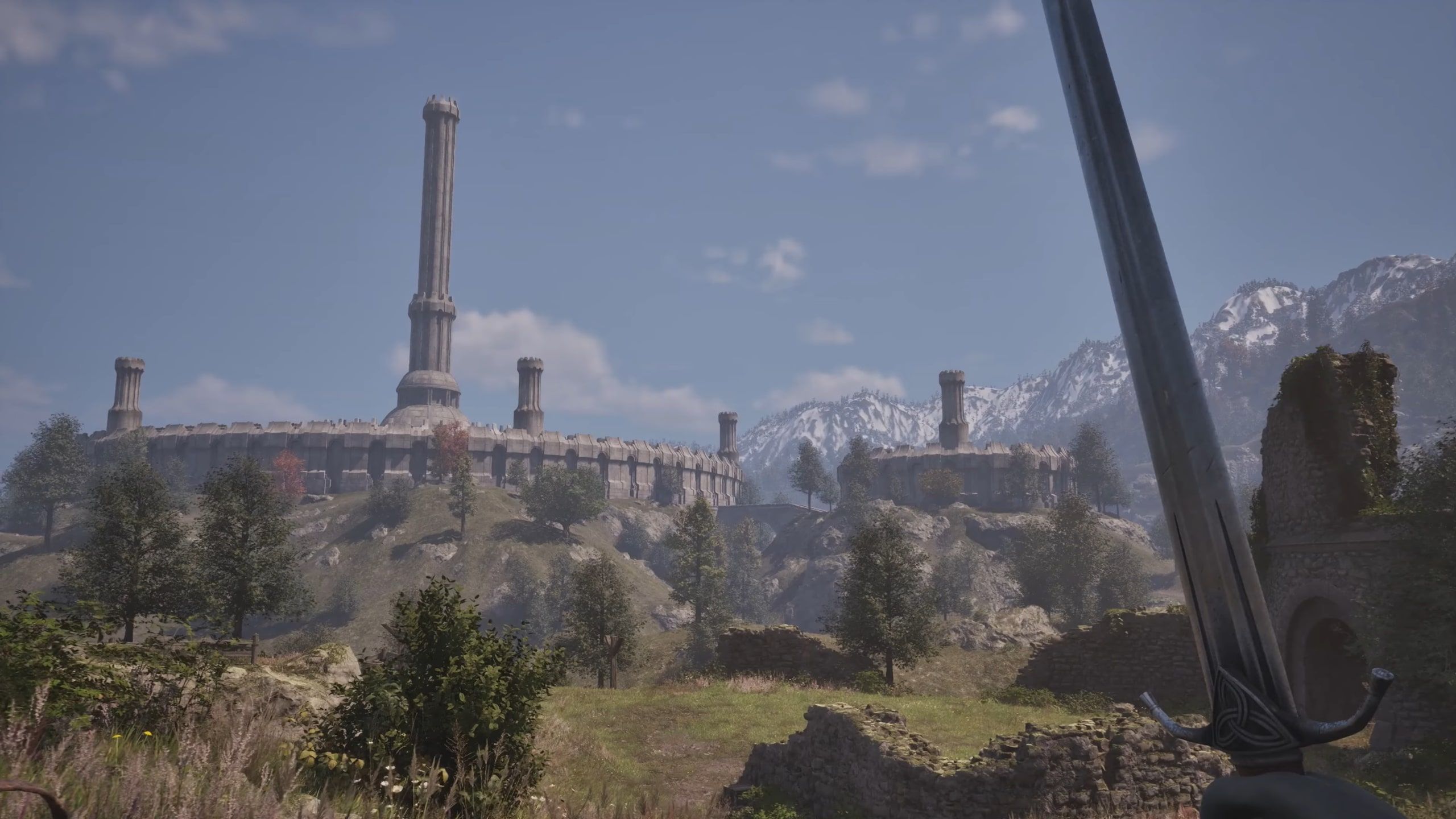
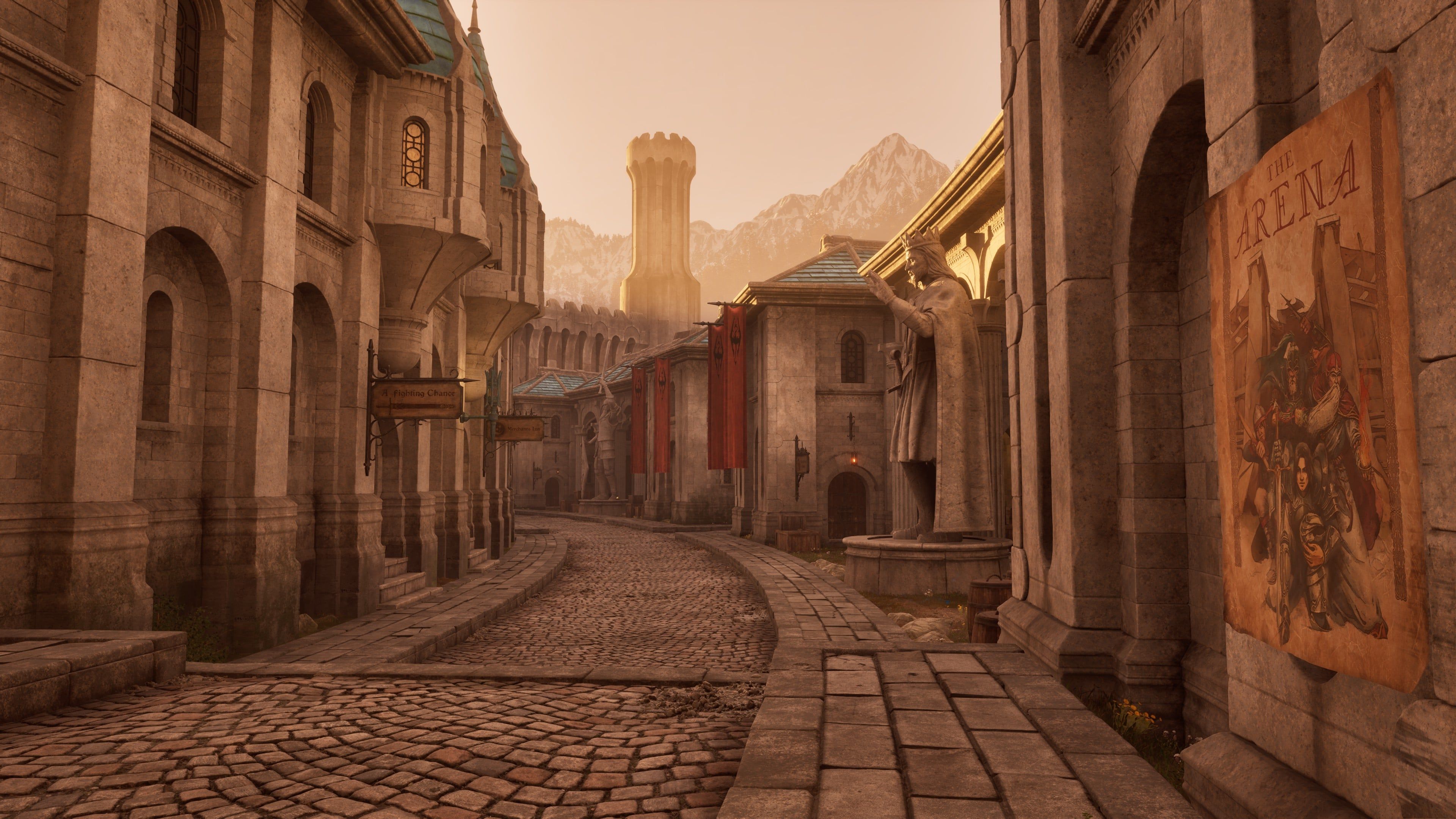
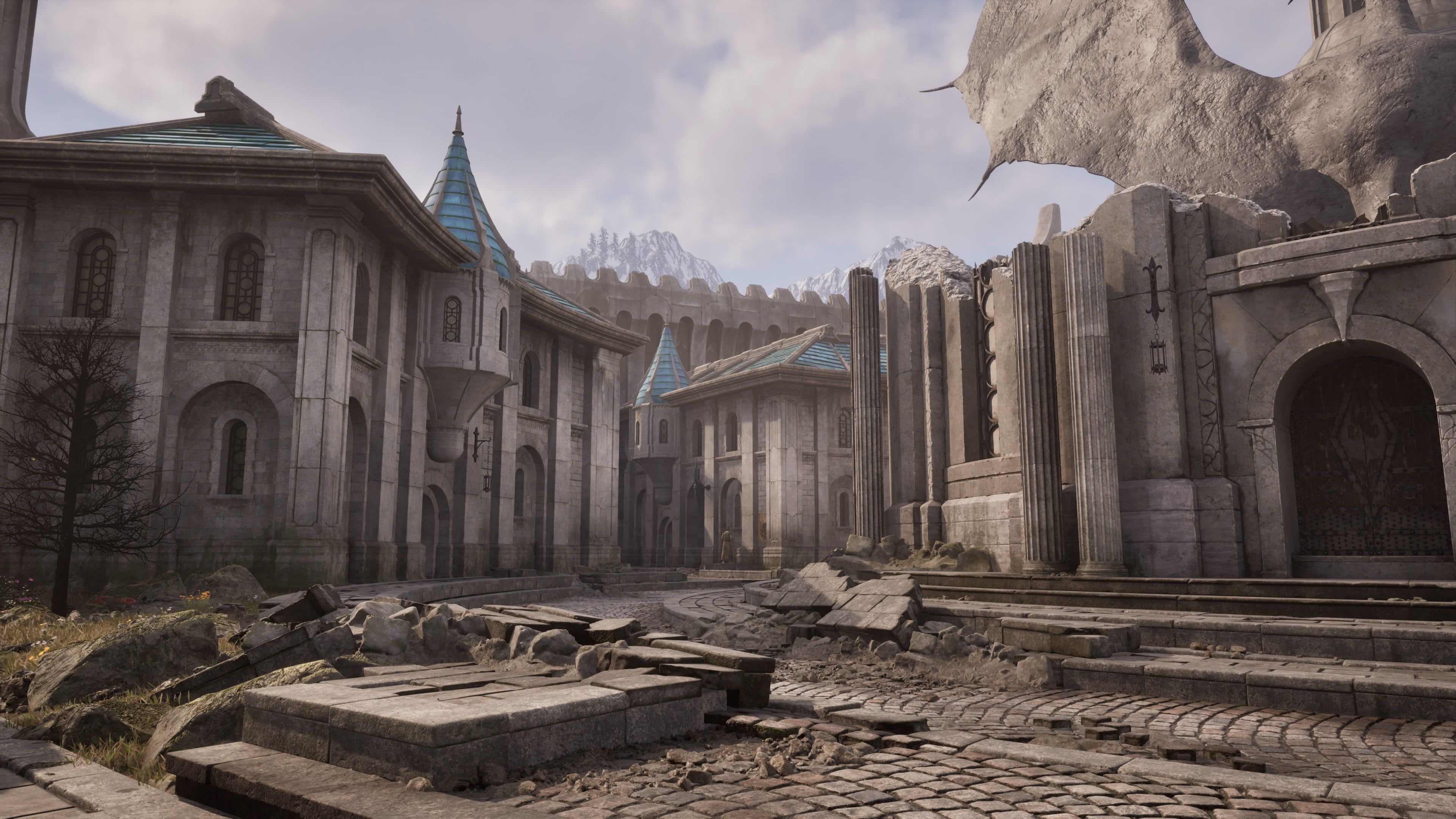
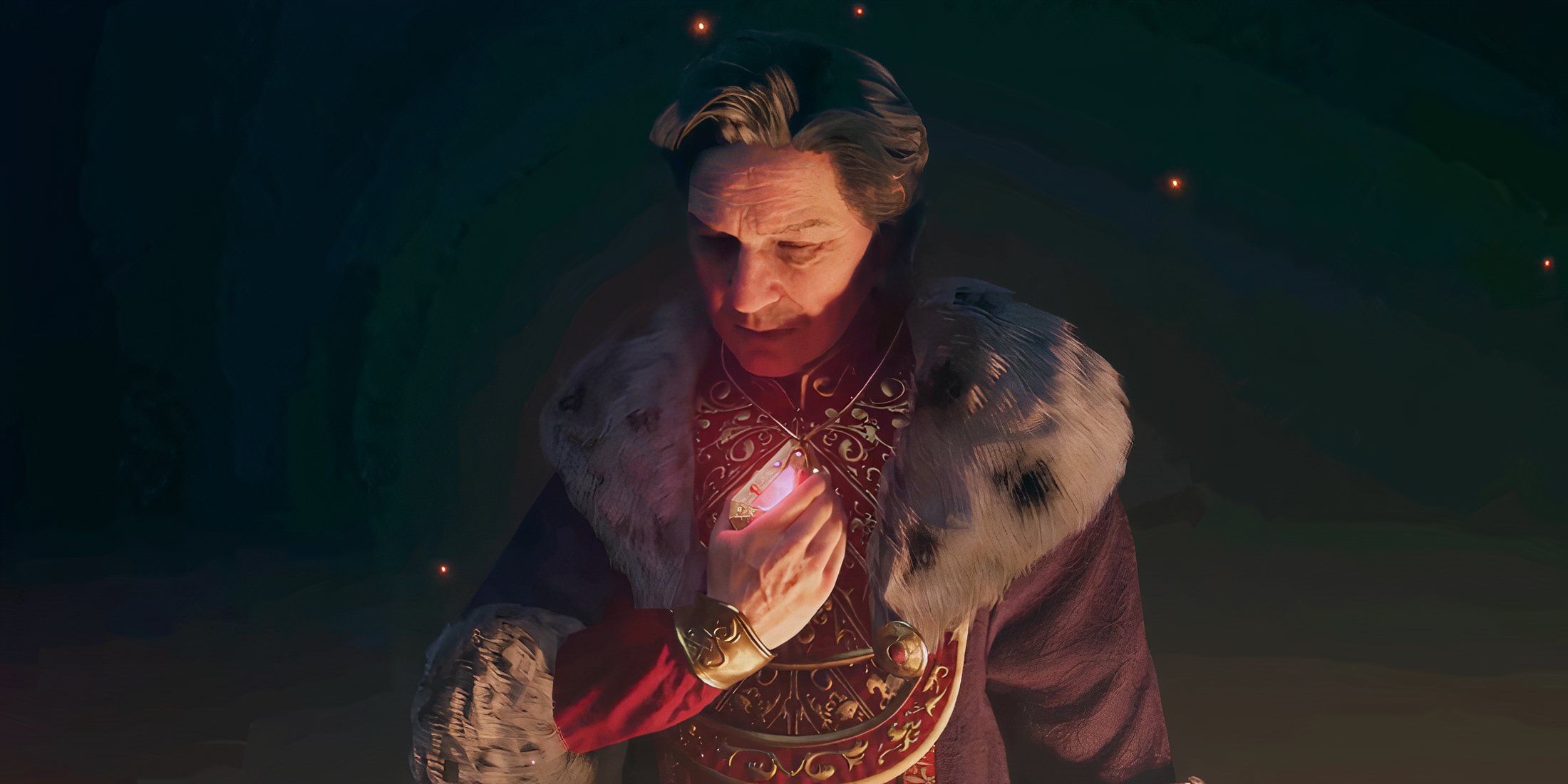
Though the structures within resemble human design and the name Imperial City suggests multiple human empires originated there, it was actually built by the Ayleids. The heartland elves, who trace their lineage back to the Aldmer, settled in Cyrodiil during the Merethic Era, a time marking one of Tamriel’s earliest historical periods. They modeled the White-Gold Tower after the Adamantine Tower and its surrounding walls share similarities with Ayleid ruins scattered across Cyrodiil.
The Ayleid inhabitants didn’t stay in the city for a prolonged period. By First Era 243, the Alessian slave uprising overthrew the elven rulers, transforming the tower into the heart of the new government. The Imperial City then came under human control, and the Alessian Empire governed from there. Although the Empire welcomed various races within its domain, a few generations after Alessia’s demise, the Alessian Doctrines of Marukh gained prominence, marginalizing non-human races in the Empire, and eventually forcing out the remaining Ayleids from the city.
In the city, the veneration of deities started to focus primarily on The One, a concept introduced by prophet Marukh, who believed that a symbol representing Alessia embodied all divinity. The fervent religious group, the Marukhati Selective, based in the Imperial City, worked diligently to distinguish elven aspects from Akatosh. This separation led to a catastrophe, triggering a Dragonbreak – an era of chaos and confusion where events occurred simultaneously, believed to have lasted for a millennium.
Over time, the city underwent significant enhancements, incorporating structures like the Arena, and primarily serving as a hub for crucial Imperial affairs. Following the fall of the Alessian Empire, nobles waged wars over the city, with the last Alessian emperor, essentially a puppet, manipulated by the nobility of Skingrad.
Reman Cyrodiil Revived the Prominence of the Imperial City
Born with the Amulet of Kings embedded in his brow, the people of Cyrodiil promptly escorted Reman to the Imperial City and placed him on a centuries-old throne without hesitation. Infusing new life into the Imperial dynasty, Reman embarked on conquest, aiming to restore the Empire. Eventually, he encountered an army of Tsaesci warriors hailing from another continent. Perceiving his dragon heritage, the Akaviri paid their respects to Reman, thereby establishing a guard and intelligence unit known as the Dragonguard. Initially tasked with protecting the emperor, the Dragonguard eventually expanded its ranks to include other races, evolving into the Blades.
For numerous generations, the Reman dynasty held power over the city, reviving its importance. The emperor’s most trusted counselors, Versidue-Shaie, stepped in to govern once Reman III was murdered, entering the city with a grand reception, declaring the commencement of their rule as an end to the First Era. Later on, even these advisors were slain, and the Reman Empire disintegrated, signaling the start of the Interregnum period.
The Interregnum Period and the Soulburst
During this period, numerous minor rulers aspired to seize the throne, yet with no Dragonborn in sight, these attempts at establishing a dynasty were unstable. The most triumphant claimants became known as the Longhouse Emperors. Perceived as mere barbarians by many, the people of Reach, led by Durcorach the Black Drake, managed to conquer the territory, and it was under Durcorach that the lineage of the Longhouse Emperors was founded.
The Longhouse Empire continued for three generations until Emperor Leovic allowed Daedra worship within Cyrodil. This controversial decision sparked a full-blown rebellion, ultimately leading to the downfall of the Longhouse dynasty. The ambitious noble Varen Aquilerios marched his troops into the city in a battle that leveled the market district and eventually emerged victorious, assuming control of Cyrodiil. However, Varen was not a Dragonborn, and in pursuit of that status, he entrusted necromancer Mannimarco with the Amulet of Kings to transform him into one.
When Mannimarco turned against Varen, he triggered the Soulburst – an enormous arcane explosion originating from the Imperial City. This event marked the commencement of Planemeld, during which Molag Bal started merging his realm of Coldharbour with Tamriel. Due to widespread uncertainty about who was responsible for it, the blame for the Soulburst was placed upon the Mages Guild based in the Imperial City. As a result, they were expelled from their position, and the Fellowship of Anchorites took over – secretly representing Mannimarco’s Worm Cult.
Amidst the turmoil, three groups comprised of numerous provinces within Tamriel united to wage the Three Banners War over dominion of the Imperial City. Once the provinces fell under their control, followers of Molag Bal sought out the Sublime Brazier, an essential artifact needed to reignite the Dragonfires, a step that would render Tamriel vulnerable to Daedra invasions indefinitely. As the conflicts reached their climax, it was possible for the Vestige to retrieve the Amulet of Kings and deliver it back to the city, preventing Mannimarco’s actions and thwarting the Planemeld.
Tiber Septim Claims the Imperial City
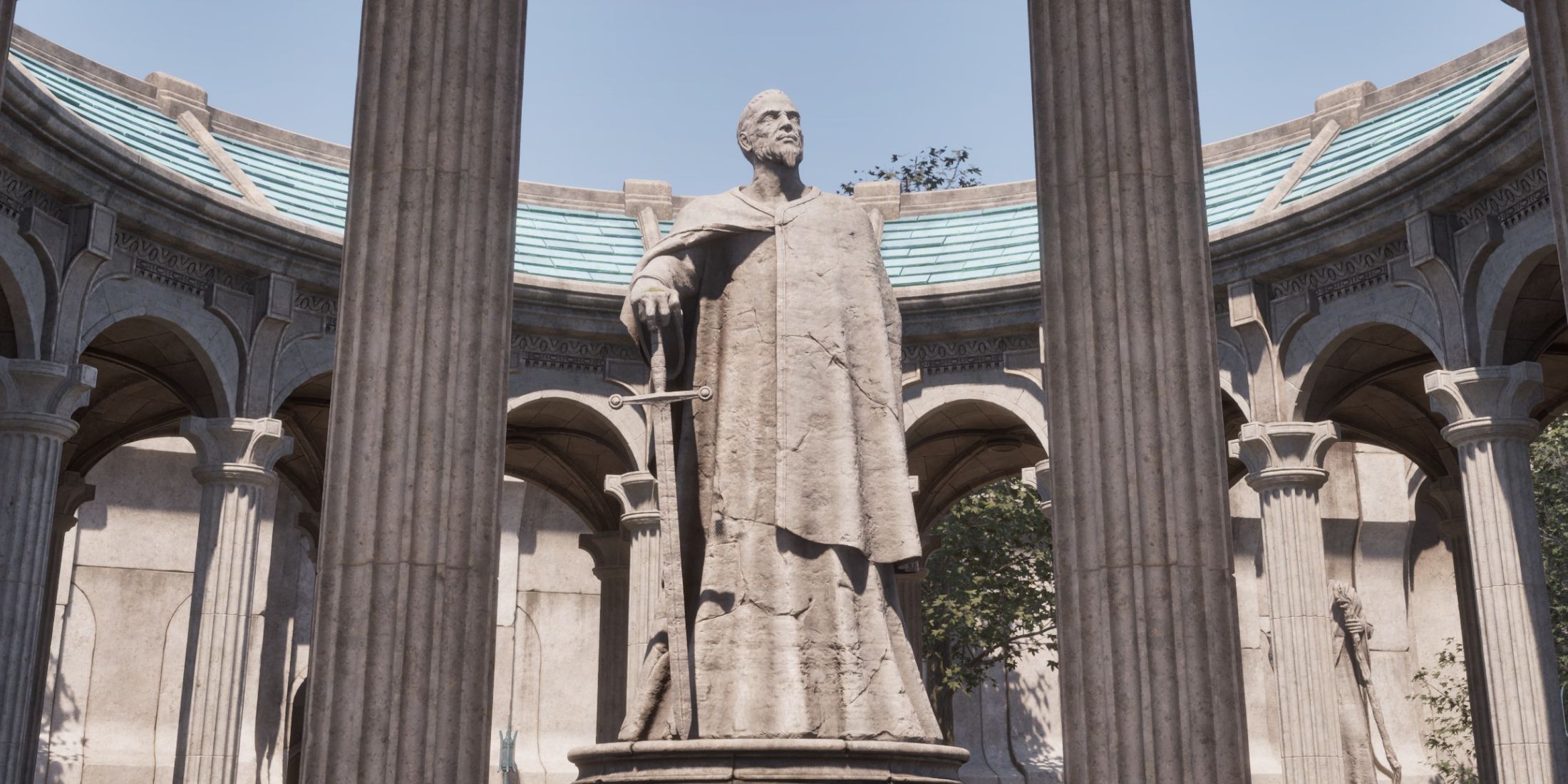
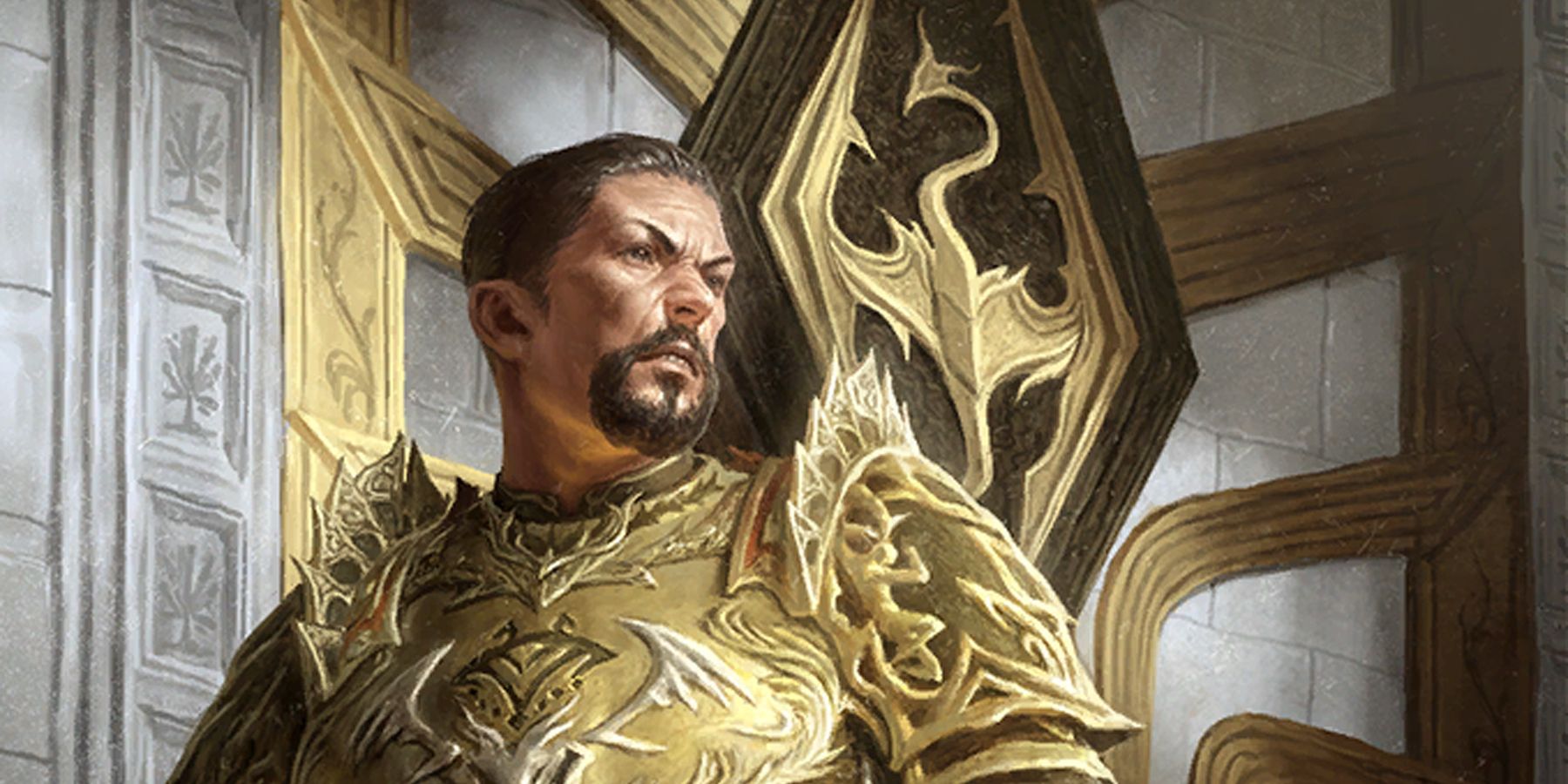
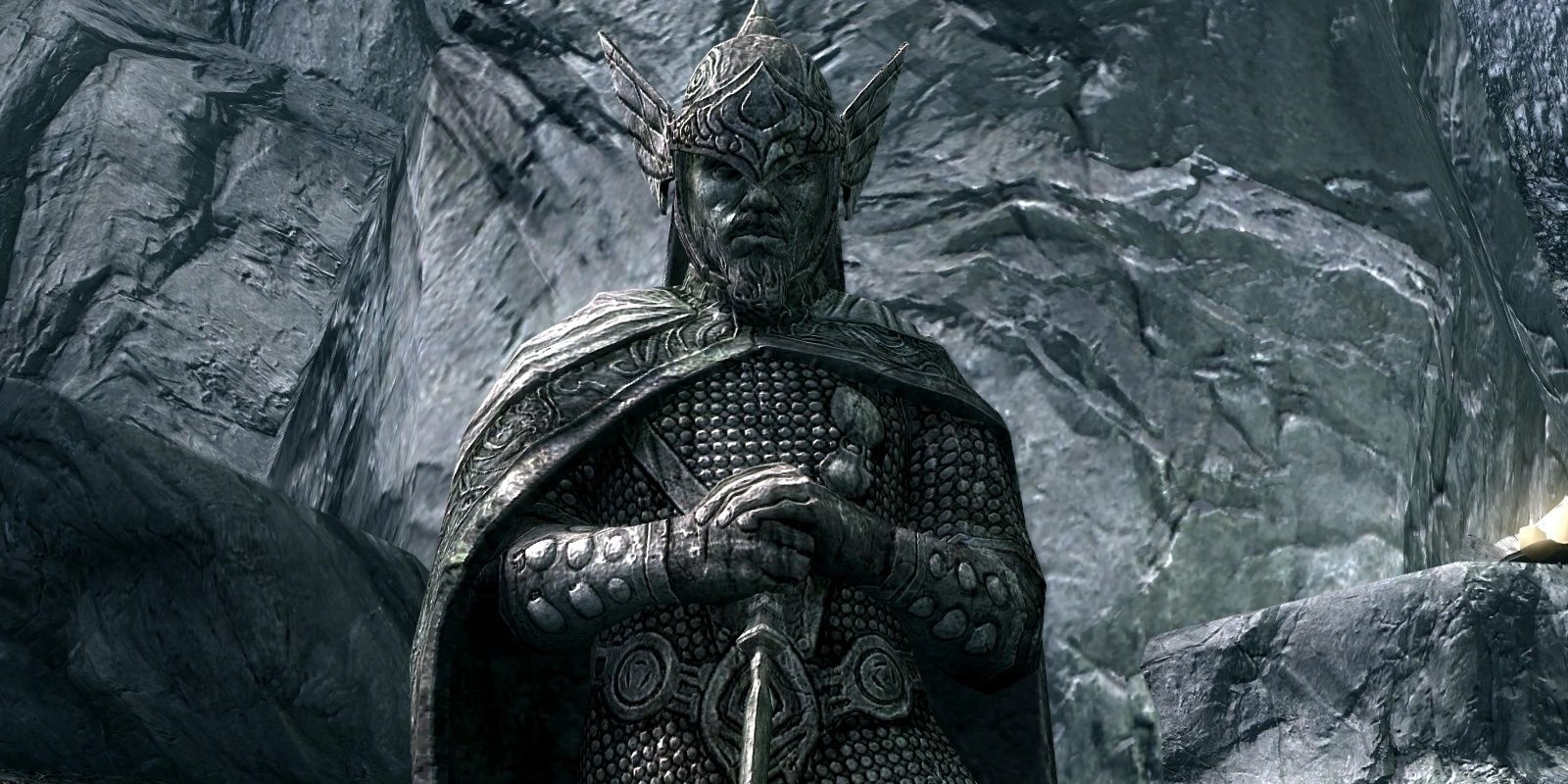
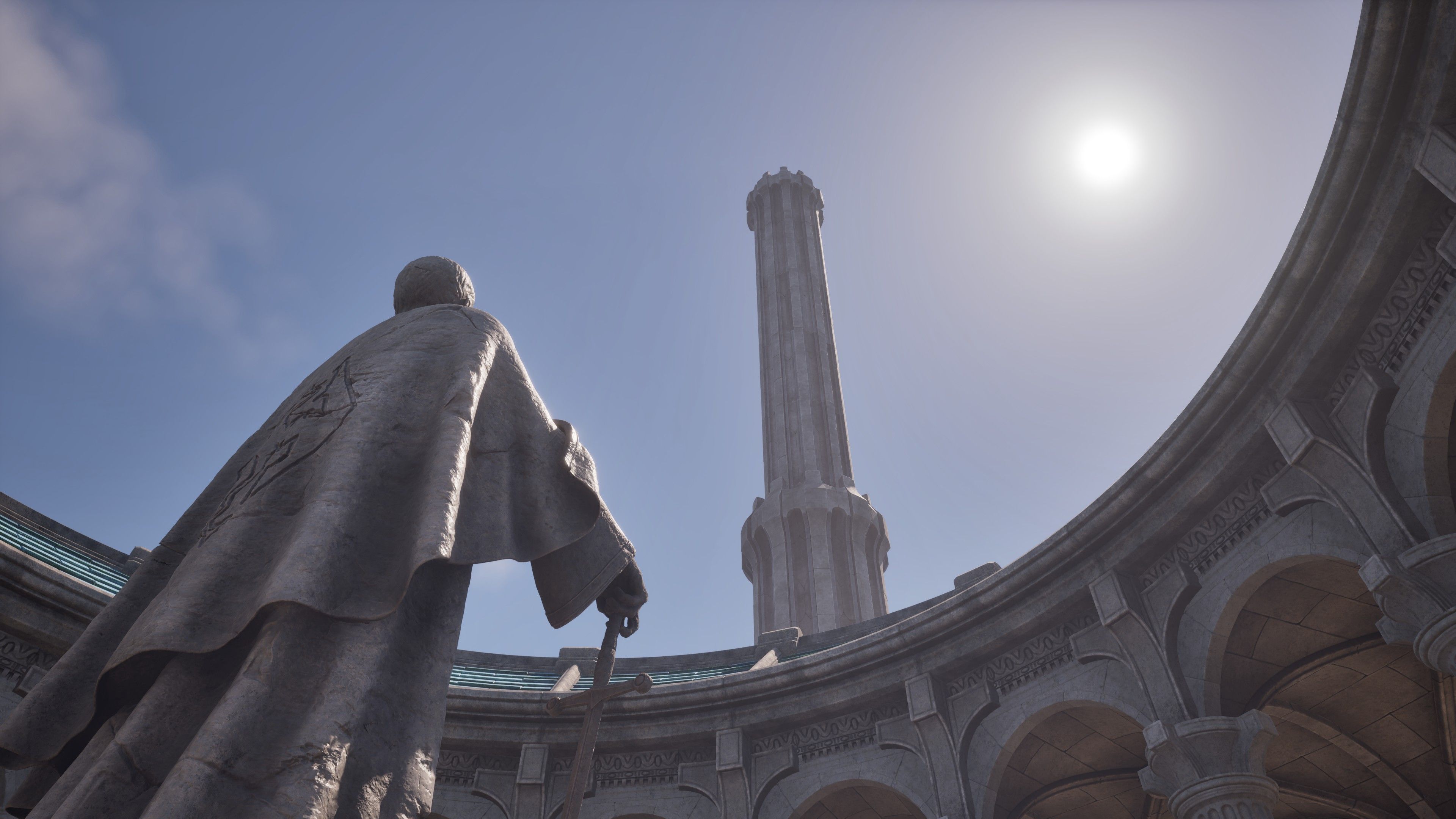
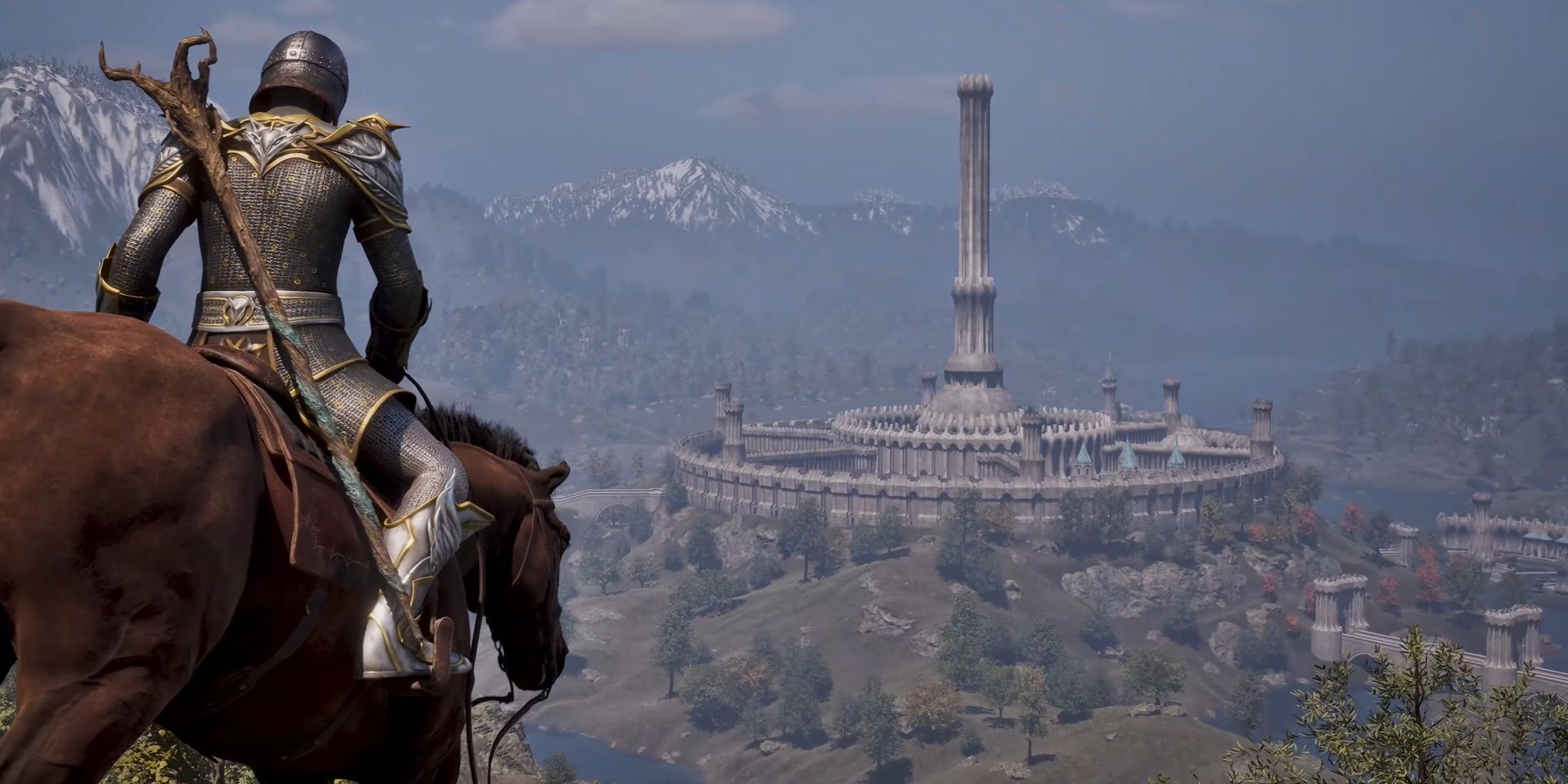
For many centuries, the Interregnum continued until King Cuhlecain, alongside his general Talos of Atmora, seized Cyrodiil. However, Cuhlecain never received a formal coronation due to his untimely and enigmatic death. In response, his most prominent general, who was also of dragon descent, ascended the throne. Thus, Talos of Atmora transformed into Tiber Septim, marking the beginning of the Septim dynasty of emperors. This transition brought back the title of Dragonborn to the empire.
During this period, the Third Empire was primarily governed by the Septim line without significant interference. However, the War of the Red Diamond, spanning from 2E 121 to 127, marked a substantial test for the empire. This conflict was initiated by Potema, also known as the Wolf-Queen of Solitude, who incited rebellion among several provinces. Among them, Skyrim stood out prominently in defying the Imperial City. Although they failed to overthrow the empire, this war lingered for many years, culminating in the siege of Solitude. This prolonged conflict gave birth to the popular fan-favorite quest “The Mind of Madness,” set within the game “Skyrim.
During the fourth century’s late stage in the Third Era, Uriel Septim VII was captivated by his battlemage, Jagar Tharn, who falsely claimed to be Uriel and ruled the Empire. The Empire endured hardships under his rule, and many Imperial allies grew distant due to Tharn’s actions. However, when the eight pieces of the Staff of Chaos were combined and Tharn was vanquished, locals in the city were apprehensive, believing Uriel’s true offspring could be Tharn’s pawns. This suspicion led to a riot, which in turn prompted a violent response from the Imperial Guards.
In the year 3E 433, the Oblivion Crisis ignited. Mankar Camoran had planted followers of the Mythic Dawn cult across Tamriel, and in a swift act, assassinated Uriel Septim within the city’s sewers, with his sons meeting their end shortly after. Using the city as a hub for recruitment, Mankar attracted supporters via his Mythic Dawn Commentaries, until the Hero of Kvatch and Martin Septim intervened, halting the invasion by Mehrunes Dagon.
The Imperial City in the Fourth Era
During the Fourth Era, the Empire experienced a significant weakening. The absence of Dragonborn rulers and provinces still recovering from the Oblivion Crisis made the power of the White-Gold Tower feel remote to many. In Morrowind, the Empire was met with hostility for abandoning it during the crisis, which eventually led to an invasion by the Argonians, causing both provinces to ultimately secede from the Empire. Meanwhile, in Cyrodiil, powerful warlords emerged, with Titus Mede of the Colovian Estates emerging victorious. Additionally, Umbriel, a part of Clavicus Vile’s Daedric realm, appeared above the city in 4E 48, aiming to sever itself from the Daedric Prince for good by using the White-Gold Tower as a means.
As a gamer, I found myself in a world where the Mede dynasty took over, bringing some semblance of peace to the Empire. Yet, this tranquility wasn’t enough to keep our provinces loyal. The emergence of the Third Aldmeri Dominion and the Thalmor triggered secessions in Elsweyr and Valenwood from the Empire, escalating into what became known as the Great War. After a long stretch of time, my city fell to the Altmer, who claimed it as their own territory.
However, in an unexpected turn of events, Titus Mede II’s Imperial forces regained control over the city during the Battle of the Red Ring. After both sides sustained significant damage from the battle, a truce was agreed upon and the White-Gold Concordat was signed, effectively banning Talos worship, while southern Hammerfell was ceded to the Aldmeri Dominion.
Following this, the condition of the Imperial City remains uncertain, as the Fourth Era’s weakened Empire and the dominance of the Thalmor suggest it may not regain prominence swiftly. Players of Oblivion Remastered might catch a glimpse of the city at its zenith in the late Third Era, but perhaps one day, a new empire will emerge, and Cyrodiil will be rebuilt once more.
Read More
- Brawl Stars December 2025 Brawl Talk: Two New Brawlers, Buffie, Vault, New Skins, Game Modes, and more
- Mobile Legends: Bang Bang (MLBB) Sora Guide: Best Build, Emblem and Gameplay Tips
- Clash Royale Best Boss Bandit Champion decks
- Best Hero Card Decks in Clash Royale
- Call of Duty Mobile: DMZ Recon Guide: Overview, How to Play, Progression, and more
- Clash Royale December 2025: Events, Challenges, Tournaments, and Rewards
- Best Arena 9 Decks in Clast Royale
- Clash Royale Best Arena 14 Decks
- Clash Royale Witch Evolution best decks guide
- Brawl Stars December 2025 Brawl Talk: Two New Brawlers, Buffie, Vault, New Skins, Game Modes, and more
2025-05-02 06:11